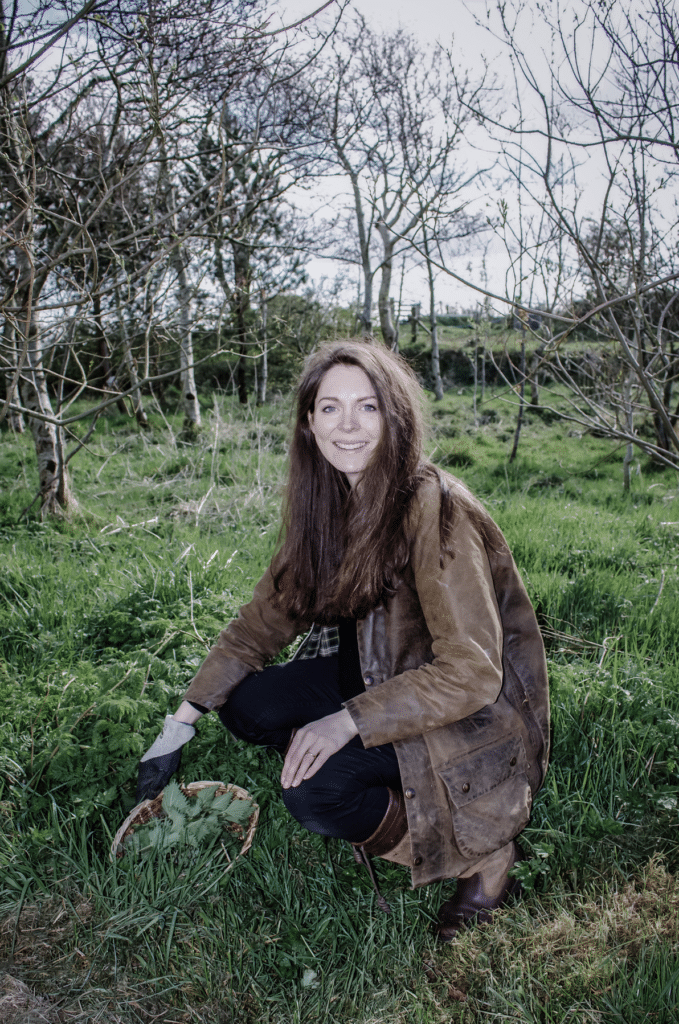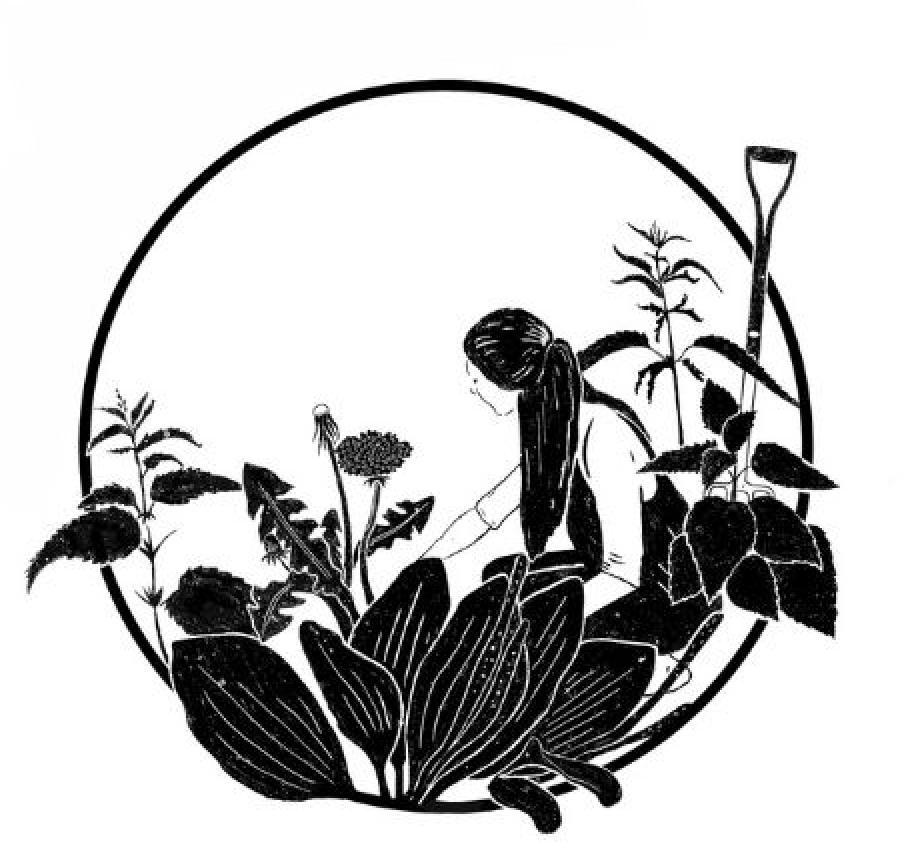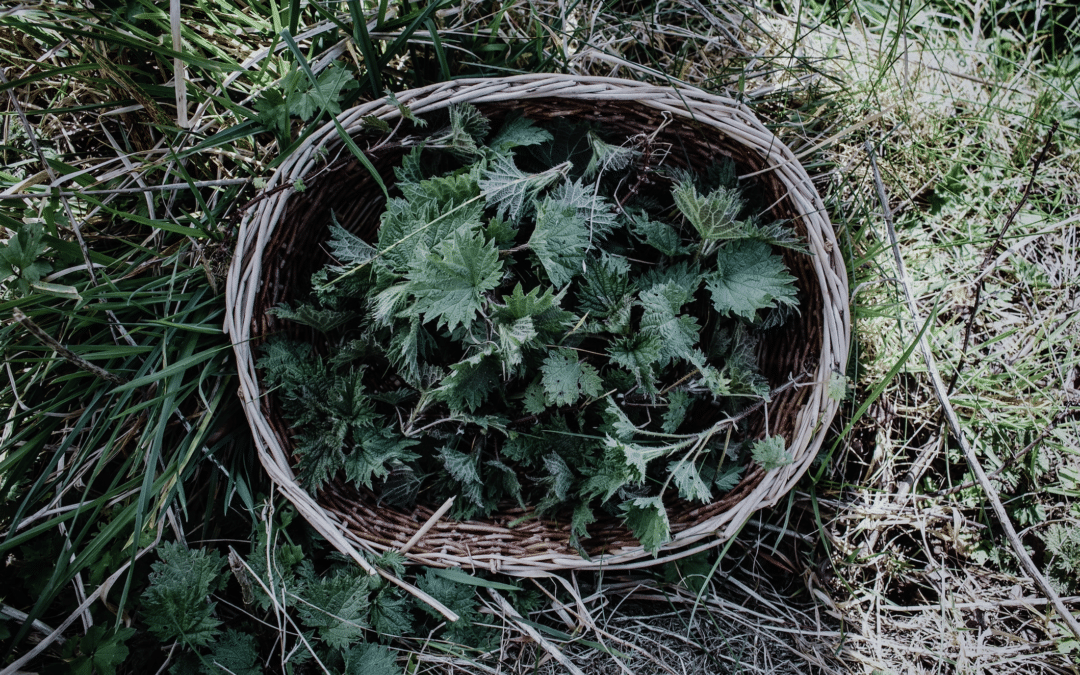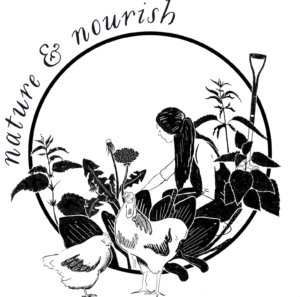Herbal Spotlight on Nettles
My first memories of nettle go hand in hand with dock! As a wild, countryside child I was constantly getting stung by nettle and then using makeshift dock poultices to quell the ouch! I always knew these painful plants were edible and I have vague memories of my dad making nettle soup although Im not sure I ever dared eat it haha!
Nowadays I adore nettle as our very own local super-food. It’s really packed with nutrients and is an excellent good all round tonic. I drink at least one cup of nettle tea a day to keep my health on track. It’s taste is quite earthy and deep but I actually really enjoy that as an alternative to coffee, which I rarely drink due to my hypothyroidism. Nettle is a far more nourishing and hydrating choice in the morning if, like me, you find caffeine a challenge.

Identifying Nettle
Urtica Dioica otherwise known as the stinging nettle is easy to find. Pretty much any waste, damp or disturbed ground will have a covering of nettles if left to it . Nettle is a good indicator of nutrient rich soil, which is why it tends to favour muck heaps and old farms! Nettle not only is awonderful food and medicine but also can be used as a natural dye and it’s fibres have been used to make fabric!
Nettle grows in patches, up to 1.5m tall and is a perennial plant so comes back year after year in the same place, making it a handy plant for the forager. The leaves are green and toothed around the edges and shaped in an oval with a point at the end and heart shape at the base. The leaves sit opposite each other on the stem. The most distinctive identifying tool of the nettle is the sting of course! The entire plant is coated in hairs that give off the sting inducing formic acid and histamine. In Roman times this sharp sting was used as a circulatory medicine. Like I mentioned before a good quick remedy to this is a make shift poultice with dock or plantain leaf.
Always harvest the top, young shoots, spring is the best time to do this, the older summer nettles aren’t great for eating and can be irritating to our systems so are best left alone. However if you cut back nettles in spring you could very well find yourself with a new batch of young growth in summer and certainly in autumn that can be picked again for culinary use so don’t despair if you missed out with the first flush of growth. As long as you look for that fresh growth you’ll be ok!
Nettles are also great for the garden, they can be used as a mulch as they have so many great soil enhancing nutrients.
The root and seeds of nettle are also edible but less popular and well known perhaps. The seeds in particular are worth harvesting for their adaptogenic and adrenal soothing effects. Harvest the seeds while they are green and hanging down from the plant in bunches like tiny grapes. A good way of doing this is by cutting a length of the plant that contains the seed, letting it dry and then rubbing the seeds through a flat wicker basket or sieve to sift them from their pods. You can them store them in a dry, sealed jar but use them within a week.
Like most plants, nettle also has it’s look-a-likes, mainly dead-nettle, which as it’s name suggests has no sting but also coloured flowers which distinguish it from Stinging nettle. Of course it’s important to get a good guide book and make sure you are picking the right thing. I really recommend Richard Mabey’s Food for Free book as a good all round foraging book.
Like always, when foraging ensure you pick from an area that hasn’t been sprayed with weed killer or too near a road. Also check leaves well for insects and especially eggs, butterflies love to use the nettle as a nest for their eggs!
Health Benefits of Nettles
There’s a saying amongst herbalists that when in doubt use nettles. Once you learn the health benefits of this humble and abundant herb you’ll soon realise why!
Nettle contains a rich array of vitamins, protein and minerals and is often used as a general health tonic especially for women and the convalescing, an adrenal soother, against hay fever and allergies and also for the kidneys and liver.
I love nettle as a mother’s tonic-it can help with post birth bleeding, iron levels and producing breast milk. It’s also gentle and safe to consume throughout pregnancy and after and I currently have many blends containing this lovely nourishing herb.
If you find yourself feeling burnt out then nettle is a great remedy as well. Its nourishing effects on the adrenals means its the perfect choice when your feeling run down and tired by external stresses. A simple tea, some bliss balls or a tincture would all be nice and easy ways to consume nettle daily.
Another great use of nettle is to reduce allergies and of course hay fever! Again a simple tea or tincture would be ideal for this.
Recipe: Hay-fever Tea with Nettle Leaf
1 part dried nettle leaf
1 part dried plantain
1 part dried elderflowers
Use 1 tsp per cup of hot water. Let infuse for up to 20 minutes.
Nettle is also a great herb for the skin, especially for skin rashes or dandruff. A simple hair rinse is lovely to use if you have a dry, itchy scalp as well as making a salve or cream out of the leaves for easing skin complaints.
Recipe: Nourishing Adrenal Tea with Nettle Leaf
1 part dried nettle
1 part dried oat-straw or milky oats
1 part dried rose petals
Use 1 tsp per cup of hot water. Let infuse for up to 20 minutes. Serve with a little local raw honey.
Cooking with Nettles
While you certainly don’t want to eat nettle straight from the plant, cooking and drying dissolves the sting and makes nettle perfectly tasty and pleasant to eat.
Nettle soup and beer are perhaps the two most common things made from nettle. Although I prefer using them as a simple spinach substitute.
The flavour of nettle is akin to spinach, earthy and strong. As a result it works well in any dish that calls for spinach; tarts, omelettes, used as a base for poached eggs, in stews, soups pestos and so on.
In my opinion the best way to cook nettle is to wilt them, once they have soften in this way you can use them up in any recipe that calls for nettle confident that they will be soft and stingless. This also means you could make up a batch and freeze it too.
Recipe: Wilted Nettles
Get a pan of salted, boiling water and a bunch of nettle tops, make sure the nettles are well washed and clean of any insects. Plunge into the water and boil for approx 3 minutes depending on the age of the nettles. Drain well. Freeze in batches or use the wilted nettle in soups, or saute.
Recipe: Sautéed Nettles
Heat a frying pan with a knob of butter until hot. Add the wilted nettles and keep moving around the pan until hot and almost catching on the edges. Remove from the pan and season to taste.
PS: if you are looking to get started with Natural living, be it making a spring herbal vinegar, reconnecting back to nature or detoxing your bathroom and making your own DIY toothpaste I have the ultimate resource for you. Its my Natural Living eCourse which is crammed full of fun and inspiring ideas and projects to get you living a seasonal and natural life! If your interested then head over to the blog and check it out!



